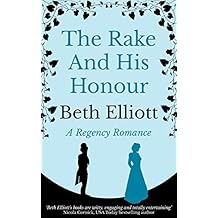Author Interview at Creative Frontiers
‘Yes! Yes! Oh Yes!’
The other day, CF powdered its wig and attended an eighteenth century salon (as you do).
Whom did we find there?
None other than Beth Elliott who writes Regency Tales, full of adventure, intrigue and romance: The Wild Card, set in London; In All Honour, set in Bath; April and May, set in Constantinople and London;The Rake’s Challenge, set in Brighton; all published by Robert Hale and available from Amazon, etc. From behind our fan, we whispered the following questions to her.
CF: Tell us a bit about yourself
BE: When not writing, travelling or attending to Wellington, the cat, I do bead embroidery pictures, where everything must gleam, shine, sparkle or glow. It helps me indulge my love of bling. In addition, I spend hours in museums like the Topkapi or the Louvre, gazing at the huge jewels and sighing with adoration at their beauty.
CF: What subjects or genres do you like to read?
BE: Because I always love to hear about other places and other times, my favourite reading matter involves travel mixed with adventure. I’ll try any historical period, set anywhere in the world. Perhaps I can include Arthurian and Celtic legends in that. I incline towards romance, mixed in with the adventures. Military tales are ok but I’m not keen on murder mysteries. Any story with a quest or about righting a wrong appeals to me.
CF: Who are your favourite writers?
BE: Jane Austen has to be the first on this list. I reread her books and always discover something else to enjoy in there. Voltaire for style, Loretta Chase for witty adventure romance, Bernard Cornwell’s Sharpe stories to while away plane journeys, Wilkie Collins is the most suspense I can take. For travel, books by Patrick Leigh Fermor, Jason Goodwin and William Dalrymple enthrall me. I’m also a closet Tolkien fan, for the pleasure of his rich language.
And I do love all Arthurian legends written by whoever and whenever. I’m developing a story about Lancelot, inspired by my particular bit of mid-Wales.
CF: What subjects or genres do you like to write?
BE: It seems like my other home to slip into the wider Regency era. So mainly I write tales of intrigue and romance set against a background of the Napoleonic wars. But I come at this from a different point of the compass, setting my stories in Constantinople, France or Portugal, for example. Earlier this year I visited Albania and found there was a lot of contact between Ali Pasha Tepelena and the British officers on Corfu, which has inspired another plotline. Travelling is one of my hobbies and as well as using the places I discover as settings, I write travel articles.
CF: How did you know you wanted to write?
BE: I always told stories, from before I could read and write. Maybe it’s the Welsh in me – I’m the only member of the family who can’t sing but I love listening to the spoken word, with its infinite range. I hear my characters speaking before I write their tale down.
CF: How did you get the confidence to start?
BE: It was more a matter of knowing when to stop. Even aged 8 or 9 I wrote long letters to relatives and huge stories for English homework. In my teen years I contributed to the school magazine and was editor in my last school year, as well as winning regional Essay prizes. My English teacher put me in for those competitions. Writing was always a big part of my life.
CF: If you can remember the day you went from non-writer to writer, how did that feel?
BE: If by this you mean learning that my first novel was accepted by a publisher, I jumped up and down for most of the day, exclaiming ‘Yes! Yes! Oh Yes!’ And it’s still a thrill to remember that moment.
CF: Do you find novels or short stories easier to write?
BE: I can write short travel articles but find short stories very difficult to construct. A novel is much easier, because it allows time to develop characters and create scenes, whether dramatic, pastoral or romantic. And to lay a few red herrings.
CF: How (and where) do writing ideas come to you?
BE: Inspiration strikes any old time. It’s like a curtain being drawn back to reveal another place. That’s why a notebook and pencil are as essential as clothes. But to start a novel, I set out a range of pictures of people and houses [collected from any and everywhere]. In a little while, one face will dominate and from the expression on that face, the person’s name and character come to me. Then other pictures will attach themselves, as family, friends, enemies, homes. And episodes of a story start to appear out of a mist, although at this stage, I have no idea where in the novel they go.
CF: What writing methods and discipline do you practise?
BE: Research about the places, the events of the period and an accurate timeline for my characters are the essential first items. Research often involves travel. For instance I walked the walk round Bath, London and Brighton to be sure of realistic times for characters to get from A to B. I visited the little palace in Istanbul where my hero stays while in that city, and so on. I have a few books on writing that help me with technique.
For me the best time to write is in the evening and I aim for a minimum of a thousand words a day. It may be rubbish but that’s easier to revise than a blank page.
CF: How much do you edit and polish?
BE: My first draft is more telling than showing, as I want to set down the details of who was where with whom, when, why, and what they did. Then when I reread it, or go back to adjust events in the light of any subsequent change in the plot, I convert it to dialogue and add in as much emotion as I dare. I do like to polish, and would do so even after the story is published, if I could.
CF: Which do you find easier: constructing characters or building a plot?
BE: The characters seem to appear fully formed, but revealing their development as the story unfolds is as much pain as pleasure. The plot seems simple at first but soon the characters take on a life of their own and hold me up by refusing to act as I wish. So, on this question, for me, both get harder as we go along. But we always get there in the end.
CF: What’s the hardest thing about writing for you?
BE: Maintaining self-belief. Some days what I’ve written seems total rubbish. But I’ve learned not to erase anything – a week later it will seem better and it can always be revised in some way.
CF: What do you most enjoy about writing?
BE: Writing is an escape into the world of my story, which is a place I want to be in. My characters are totally real for me. And another pleasure is the actual words, using language to craft scenes that my readers can see. I love it when I read a bit out at my writers’ group and get the comment, ‘I saw that as clearly as if it was a film’.
CF: Do you fall into writing ‘dumps’ and, if so, how do you get out of them?
BE: Sometimes nothing can awaken the muse. The frustration is enormous but that’s the time to stop exhausting myself. I read a gripping novel or watch a DVD to forget my woes. This can last days at a time. If I can’t get on from the point where it all stalled, I go back to the beginning of the story, rereading and editing slightly, to get back on track. By the time I come to that dreaded blank page, there’ll be a thread that needs more development or some fresh ideas to try.
CF: If you’ve suffered rejection, what works for you in dealing with it?
BE: It’s very crushing to be rejected but it helps to keep on writing the current WIP. After a few checks on stated requirements at an agency, I’ll send out the story again. I know it’s fierce competition among editors to get any story accepted for publication, so the only motto is: Never give up.
CF: What are you working on at the moment?
BE: A quest set in 1813. The hero is the second Montailhac brother, the charmer, who longs to have a role where he could excel, like his older brother [in Scandalous Lady]. Through a fast paced chase battling Napoleon’s secret police, he develops into a more mature person – helped of course by a young woman of courage and determination.
CF: What further ambitions do you have for your writing?
BE: To do better, in terms of depth of plot and more complex characters, so as to write a totally compelling story. I’ll get there by the time I hit 100.
Beth Elliott on Facebook and @BethElliott on Twitter



























4 comments for “‘Yes! Yes! Oh Yes!’”